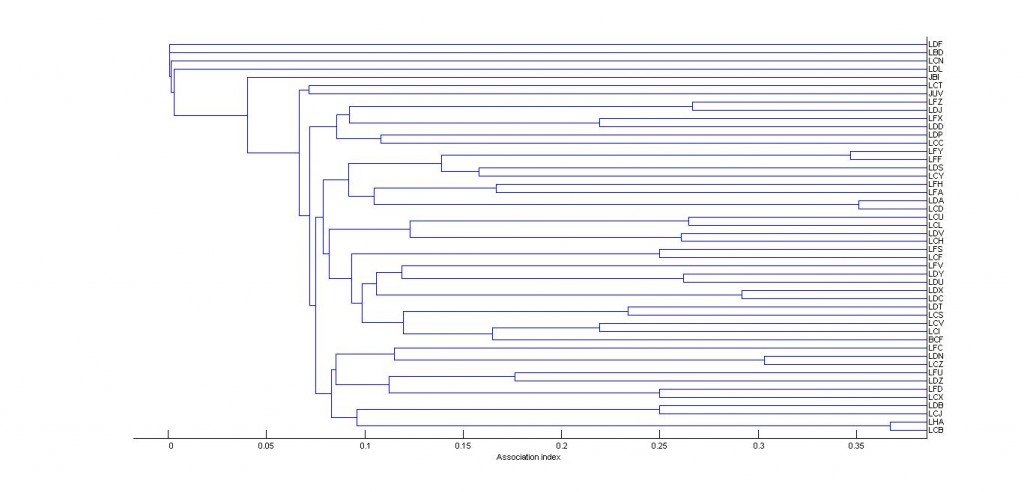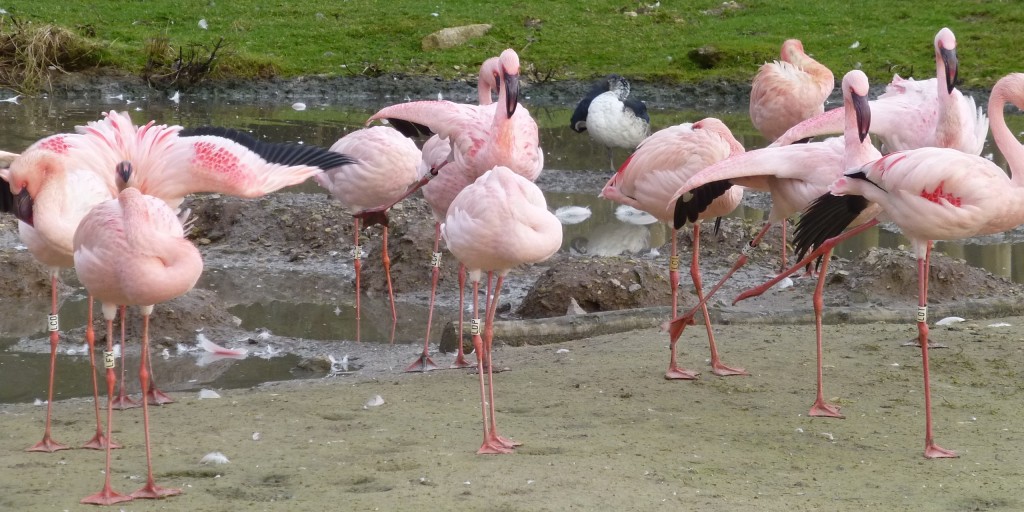Romantic flamingos this Valentine season?
As the 14th February comes and goes, and thoughts turned to cards and flowers and chocolates and romance, what of the partnerships that form between our feathered friends? As these fleeting dalliances for the sole purpose of producing youngsters or are there cases where partnerships last a lot longer? I remember being told that geese traditionally lay their first eggs on Valentine's Day so perhaps this auspicious date is important for our feathered friends? Maybe on the geese front this is a bit of an "Old Wives' Tale" (and I am sure that duckery expert Phoebe will be able to tell you more!) but certainly the end of winter and the coming of spring, ignoring the current torrential rain, monsoon and generally terrible weather, are a time when birds pair up, start prospecting for nests and think about time for chicks.
I always like to think that flamingos are rather democratic in their way of choosing a partner. In most birds, and we know this from well-studied species like peafowl for example, the male displays to the female and she then choses the one that she likes. The big group displays that flamingos use to coordinate their breeding are made up of both boys and girls displaying to one another. The partnerships between male and female flamingos are currently under much debate and scrutiny to investigate how they form and why, and research is hoping to investigate how long they last for.
Bowing, nodding and dancing. The Slimbridge lesser flamingos start to think about getting flirty. But do these birds actually stay friends all year around?
Some scientists suggest that flamingo partnerships change each breeding season and that males and females stay together for the course of the nesting period and then disperse outside of it, reforming with potentially different mates in the following year. Other folk think that flamingo pairings are more stable and that a male and female will remain together over many subsequent breeding seasons as well as over the winter too. I think there may be a bit of both of these ideas going on, certainly amongst flocks in captivity. It is interesting to see how the different flocks arrange themselves. The Andean flamingos, for example, show some very strongly bonded pairs whereas the lesser flamingos have a lot more of a fluid pattern of associations. The Caribbean flamingos too show some birds that are really attached to each other compared to some individuals that are often seen mixing in different groups.
 What do all the lines mean? This is an example of the strength of the "friendship" between each bird in the lesser flamingo flock. Each flamingo's identification is along the right hand side. The numbers along the bottom should go from 0 to 1, with 1 being birds are seen together all of the time. In this case, the graph goes no higher than 0.4 showing that birds mix together freely, with no real strong friendships between each bird.
What do all the lines mean? This is an example of the strength of the "friendship" between each bird in the lesser flamingo flock. Each flamingo's identification is along the right hand side. The numbers along the bottom should go from 0 to 1, with 1 being birds are seen together all of the time. In this case, the graph goes no higher than 0.4 showing that birds mix together freely, with no real strong friendships between each bird.
This could be put down to differences in the behaviour and ecology of each species in the wild. Flamingo species that move and travel a lot might be less inclined to form really strong friendships with other birds as they may be more likely to be broken or changed. Flamingos that are more local in their habits, and spend a large proportion of their together as one flock in one place may be more likely to form stronger partnerships as they "know" that the same birds will be around and in the same area that they are. Wild studies on Caribbean flamingos on some Caribbean islands and in the Galapagos consistently show the same birds turning up together in the same places.
So once again, the tall pink birds are mysterious in their behaviour and one flamingo is not just the same as another. These species differences make the Slimbridge flocks important for scientific investigation as they help us determine why there are biological and behavioural differences between the different types of bird and why they act in the fashion that they do. So just remember this romantic season, that animal relationships can be just as complex, and as fascinating, and as full of individual differences as the ones that people invest so much time in.




